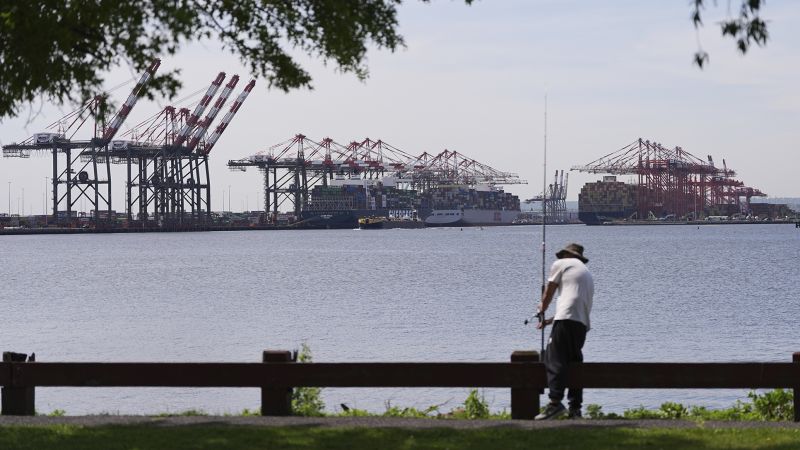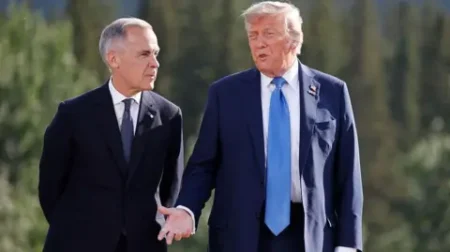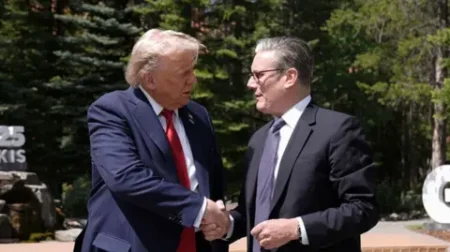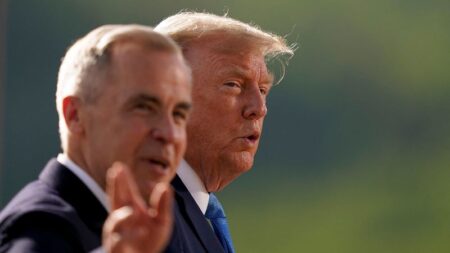In recent months, the United States economy has displayed surprising resilience despite facing multiple headwinds. Amid an environment of heightened tariffs on a broad range of imports and tensions within the Middle East, key economic indicators have remained stable. Inflation has seen minimal fluctuations, and the unemployment rate persists at historically low levels. Notably, the stock market has recently achieved new record highs, reflecting investor optimism regarding economic durability.
However, looming deadlines could soon disrupt this economic equilibrium. The first critical date to consider is July 9, signaling the end of President Donald Trump’s temporary reprieve—a 90-day pause on what he refers to as “reciprocal” tariffs imposed on various trading partners. Without successful trade negotiations, numerous nations could face significantly higher tariffs on their exports to the U.S. This could further exacerbate supply chain challenges and consumer costs, increasing pressure on inflation.
Following closely on the heels of the tariff discussions is what Treasury Secretary Scott Bessent identifies as the “X-date,” anticipated to occur in August. At this juncture, the U.S. government may find itself unable to meet its debt obligations for the first time in history. The implications of a national default could range from severe financial market turmoil to global economic instability. As Bessent has urged Congress, raising the debt ceiling by August 4, prior to the one-month legislative recess, is imperative to prevent such dire consequences.
President Trump has actively encouraged Congress to reach a decision by July 4. Yet, this process has been complicated by the interwoven nature of various legislative measures contained within what Trump described as his “One Big, Beautiful Bill.” The sweeping nature of this proposal seems to stitch together various economic priorities, making its singular passage more contentious.
Another volatile factor affecting the current economic landscape is the fragile ceasefire brokered by Trump between Iran and Israel, which, if destabilized, could catalyze spikes in oil prices. Such an increase in energy costs may compound inflationary pressures already accentuated by rising tariffs. Ryan Sweet, chief U.S. economist at Oxford Economics, cautioned about the inherent lag between tariff adjustments and their impact on consumer prices, signaling a potential uptick in expenses consumers will inevitably confront.
Moreover, systemic issues are also surfacing within the economy. Reports indicate that the number of individuals relying on unemployment benefits has surprisingly boosted to a four-year high, raising alarms about consumer confidence and spending, crucial engines for the economic recovery post-pandemic.
Trump’s approach to tariffs reveals a strategic willingness to forcibly apply pressure, as exemplified by previous increases on Chinese imports, which surged to a staggering minimum of 145%. Post-negotiations, a deal on May 12 brought that rate down to 30%, demonstrating his administration’s responsiveness to trade complexities. Additionally, other sectors face daunting tariffs: 50% on steel and aluminum, and 25% on vehicle parts, among others. Notably, despite the United States-Mexico-Canada Agreement providing exemptions, recent tensions with Canada have prompted Trump to threaten new tariffs due to the imposition of a new tax by Canada.
Despite some cautious optimism, the timeline for trade deal finalizations remains uncertain. Trump himself recognized the unlikelihood of concluding agreements with a vast number of countries—a staggering 200—by the upcoming July 9 deadline.
With pressure intensifying in light of tariff discussions, Sweet posited that a last-minute resolution to raise the debt ceiling is likely, albeit with a sense of apprehension. Ensuing weeks are bound to test lawmakers’ resolve, as a failure to act would render severe political and economic repercussions. The balancing act between maintaining fiscal stability and navigating complex trade negotiations underscores the intricate landscape President Trump must traverse.











